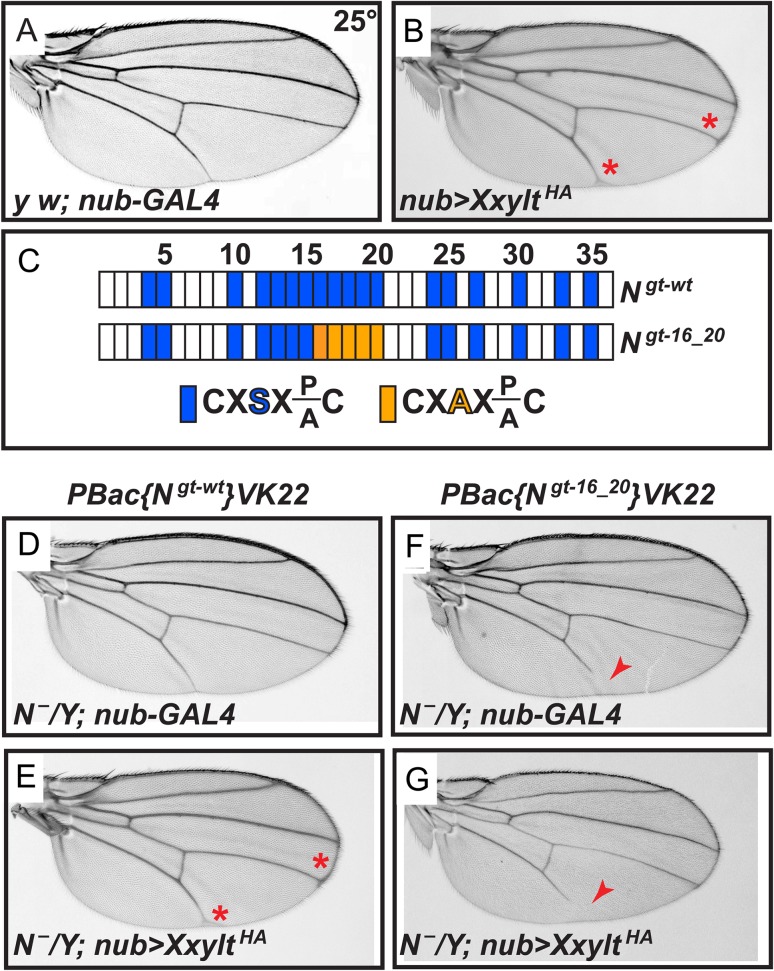Fig. 4.
Overexpression of Xxylt causes a mild wing vein thickening phenotype by adding xylose to one or more EGF repeats in the Notch EGF16-20 region. (A) Control y w; nubbin-GAL4 (nub-GAL4) wings show normal wing veins. (B) Wing-specific overexpression of XxyltHA by nub-GAL4 shows mild wing vein thickening (red asterisks). (C) Schematic of the EGF repeats of wild-type and mutant Notch genomic transgenes. Blue boxes show EGF repeats with a consensus O-glucosylation site; orange boxes denote EGF repeats with a serine-to-alanine mutation in the O-glucosylation site, which prevents the addition of O-glucose and therefore both xylose residues. (D) N¯/Y; PBac{Ngt-wt}VK22/+; nub-GAL4 males exhibit no wing vein thickening. (E) N¯/Y; PBac{Ngt-wt}VK22/+; nub-GAL4 UAS-XxyltHA (nub>XxyltHA) males show mild thickening of wing veins (red asterisks). (F) N¯/Y; PBac{Ngt-16_20}VK22/+; nub-GAL4 males show a wing vein loss phenotype (red arrowhead). (G) N¯/Y; PBac{Ngt-16_20}VK22/+; nub>XxyltHA males do not show a wing vein thickening phenotype. In most cases (89%), the wing vein loss phenotype is not rescued by Xxylt overexpression (red arrowhead).

